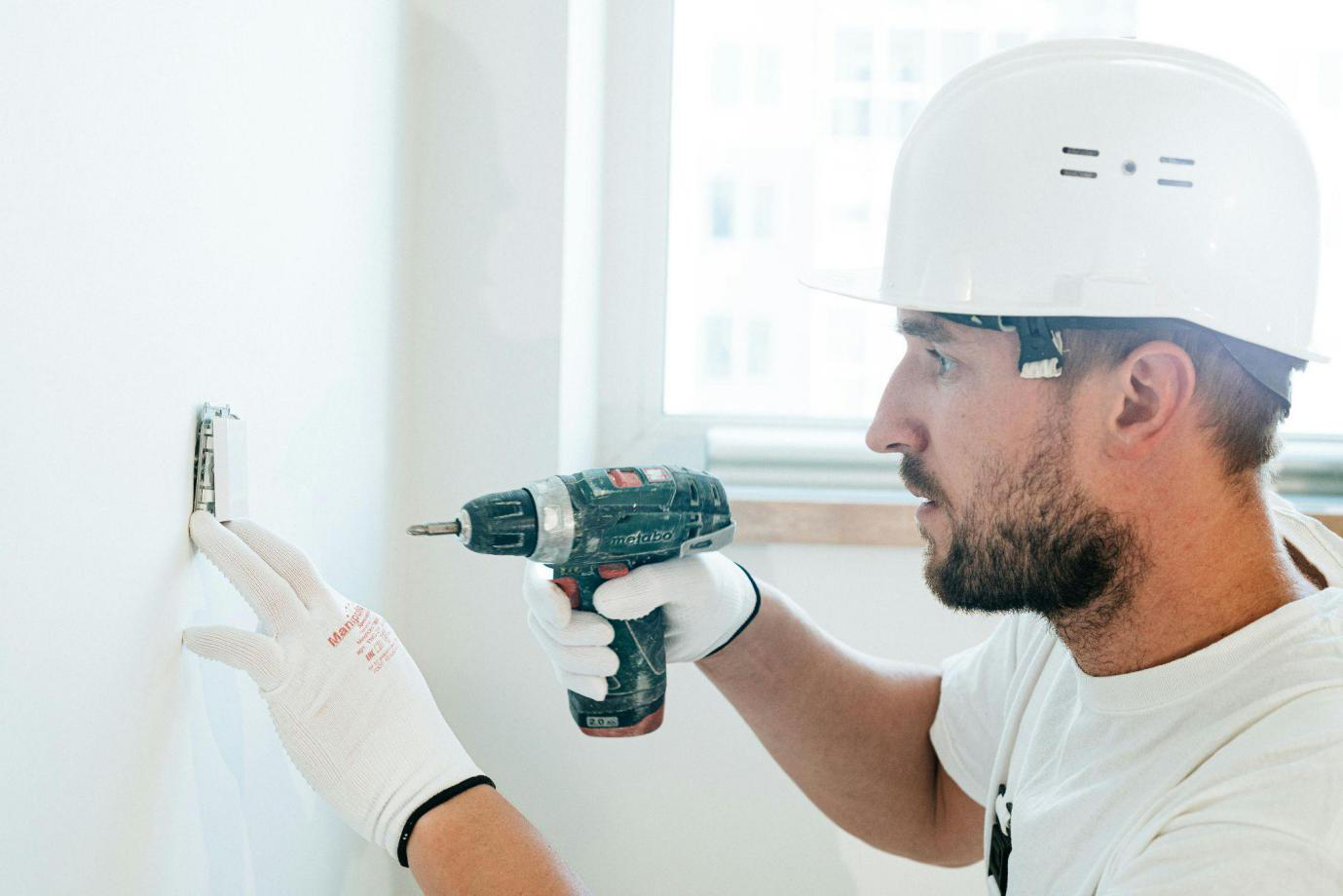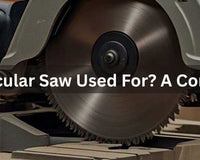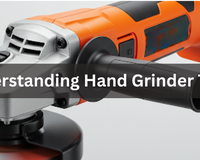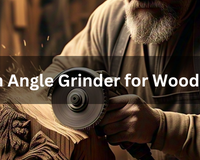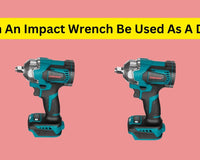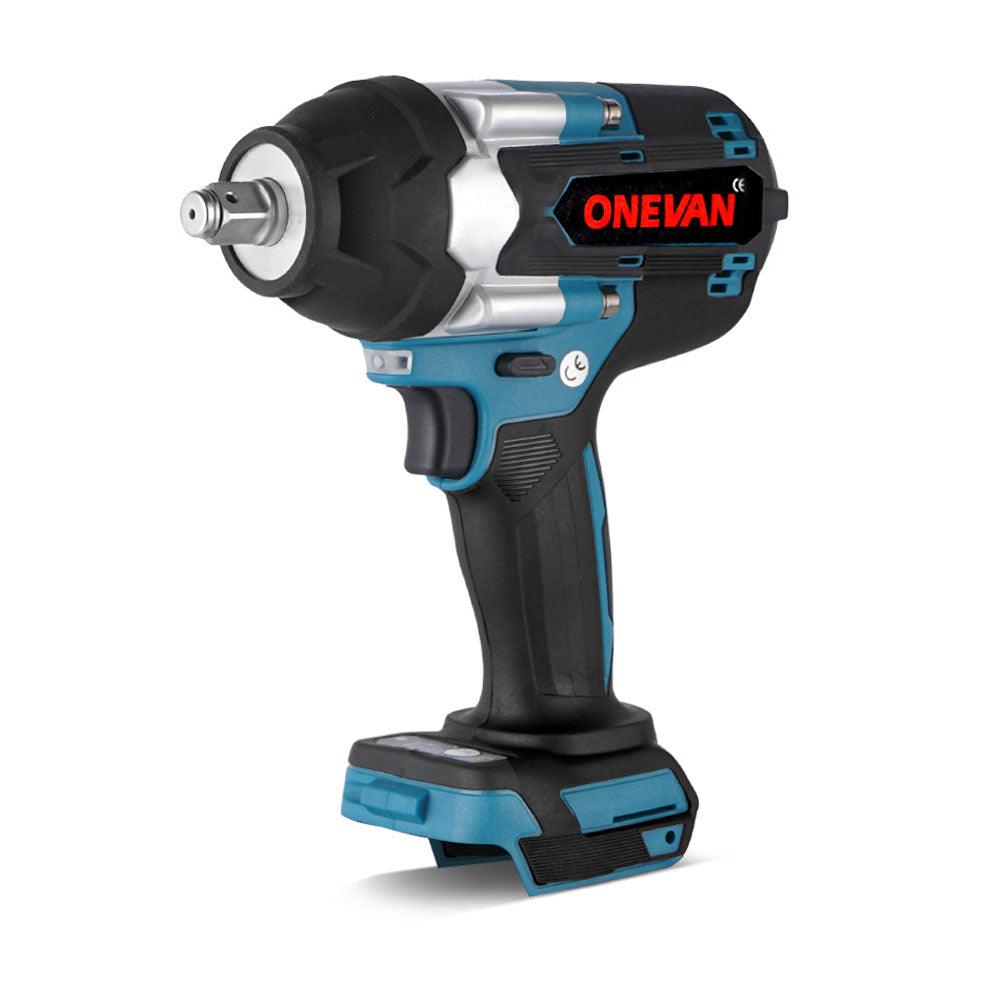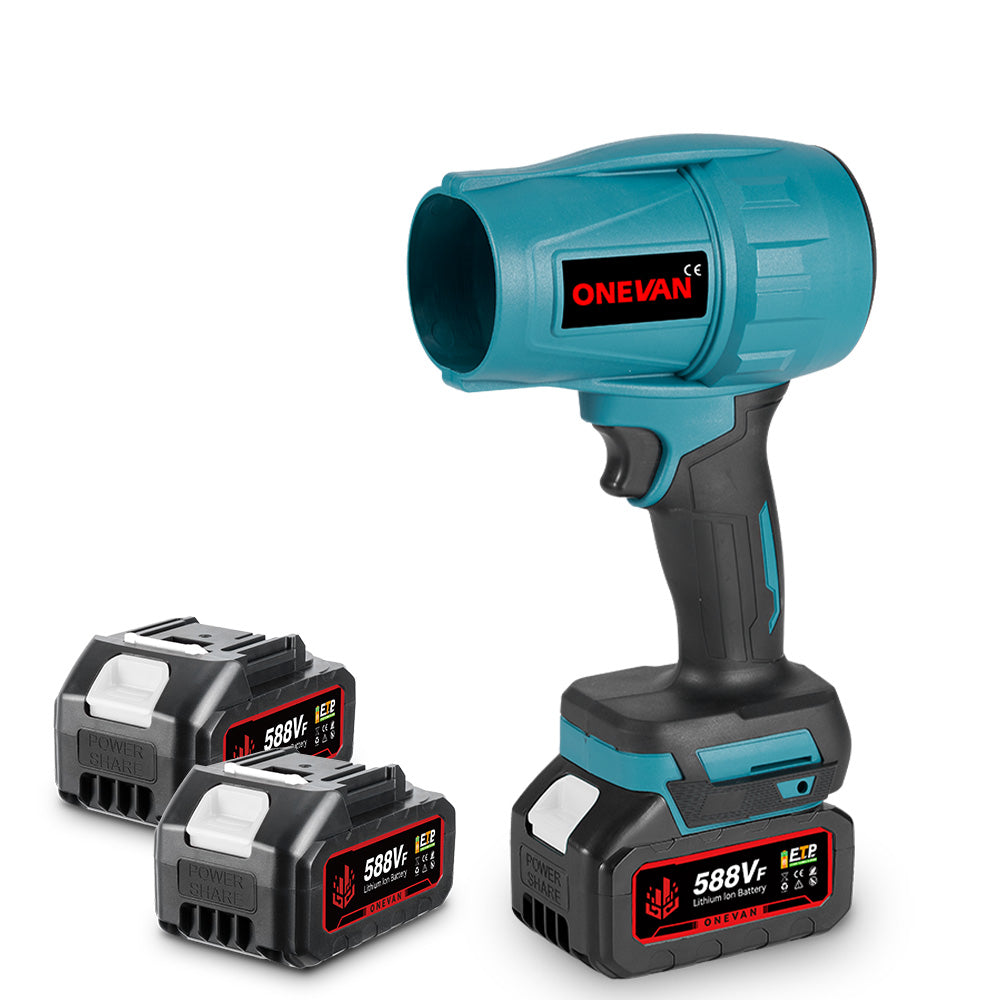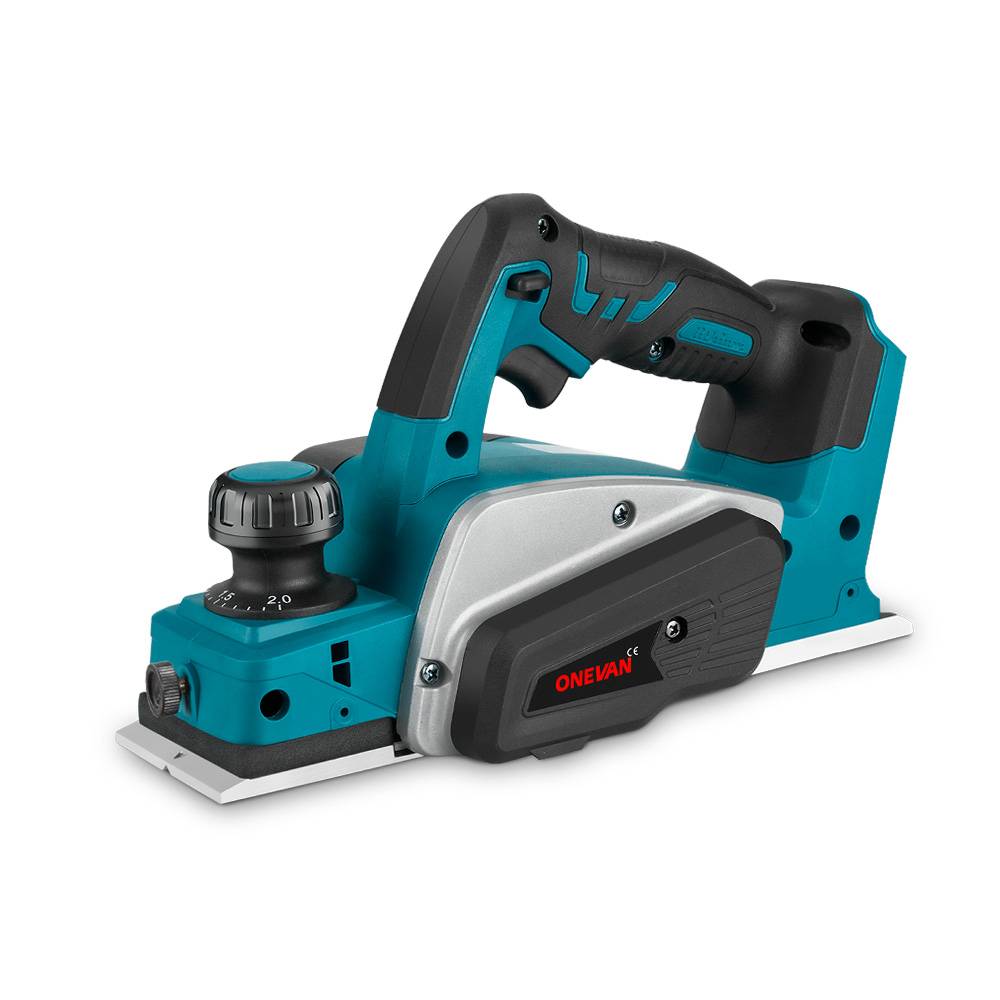Are you confused about what type of tool you need for your next construction project? Do you have a hammer drill? If you have a hammer drill or have bought one recently, or are going to buy one, we've got you covered in this article. We'll learn about the different types of materials hammer drills can drill into, their essential uses, and the types of drill bits that can be used in each material. First, let's learn what a hammer drill is.
1. Hammer Drill and Its Working Mechanisms
A hammer drill is a useful power tool for drilling through materials that can't be drilled with a regular hand drill. It can drill into concrete, masonry, stone, and ceramic. But what actually allows it to do this? What makes it different from other types of drills? The secret lies in its mechanism of action. A hammer drill comprises a rotary action and a hammering action. A powerful motor drives the drill bit rotation. Parts of a hammer drill include a motor, gearbox, and chuck. The electric motor drives the drill, and this rotation is transferred to the gearbox, which powers the chuck. To penetrate harder materials, the shaft connects to two cams. As the motor rotates, these two cams rotate too. This rotation of cams produces a movement that drives the drill bit forward, allowing it to break through tough materials.
2. Different Types of Hammer Drills
Corded Hammer Drills
Slotted drive systems or SDS hammer drills are corded hammer drills. They run on direct power, so you don't have to worry about battery recharge.
Cordless Hammer Drills
Brushless motor hammer drills with batteries are used for drilling in masonry. They are also useful in outdoor tasks where electricity might not be available. One example of a cordless hammer drill is the ONEVAN hammer drill.
Combination Hammer Drills
They function as both a hammer drill and a regular drill, and they might have a screwdriver option. You can turn off the function according to the tasks and materials intended.
3. What Makes a Hammer Drill Different From a Regular Drill?
The regular drill rotates constantly to drill holes, but a hammering action striking the back of the chuck is an additional feature that allows it to penetrate tougher substances. This means that along with rotations per minute or RPM, a hammer drill also has blows per minute or BPM due to the force of the hammering impact. Hammer drills are 25% faster than regular drills and even have more power. Due to the hammering action, each blow helps drill into a hard material at a faster rate. Regular drills might have a constant speed or a single-speed option, while hammer drills have two or three-speed settings. The RPM range can vary significantly in hammer drills depending on the material being drilled, while for regular drills, it typically ranges from 1000 to 3000 RPM. While the hammer drill has its advantages, it still shouldn't be used in tasks that require precision or in materials that are too fragile to withstand the pounding force. Next, we will introduce the materials the hammer drill can be used on, as well as the corresponding bricks and uses.
4. Using a Hammer Drill on Concrete
Are you looking to fix something in concrete? A hammer drill can assist with tasks such as placing anchor bolts or installing supporting structures. It is also used to chip concrete or break off larger portions of concrete. Chuck of hammer drills accepts both round and hex-shaped drill bits. The drill bits have a spade-shaped tip that eases the movement into tough materials like concrete. Chisel-shaped tipped drill bits are best for chipping off the concrete.
Uses
Hammer drills are helpful when installing anchors for mounting fixtures such as shelves and televisions. Their rotary and hammer mechanism helps bore holes in concrete, which are used in different plumbing and electrical tasks. Assembling your concrete patio? A hammer drill is the way to go for that purpose. Construction tasks on a large scale need rotary hammer drills, as they can bore even greater holes. Drop-in anchors and toggle bolts can easily be fixed in concrete after pre-drilling with a hammer drill. Hammer drills are essential for creating sturdy anchor points for rebar installations. They are used for demolishing or chiseling purposes during construction or renovation projects. When using it for demolition tasks, you should turn off the hammering function. A hammer drill is a great tool even for DIY enthusiasts who need to install different kinds of anchors on concrete walls.
Uses in Cinder Blocks (2 Cavity Hollow Concrete Blocks)
Hammer drills are powerful tools for installing dryer vents or any outflow system. When used with hole saw bits to drill large holes in cinder blocks, they can be used for many DIY and remodeling projects. You can also install brackets on your garage walls with a hammer drill. Want to install light fixtures or hang your artwork in your basement? A hammer drill is what you need.
Drill Bits for Concrete and Cinder Blocks
Diablo quad carbide drill bits, SDS, SDS-Max, or SDS-Plus drill bits, carbide-tipped masonry bits, and diamond core bits for larger holes are the most important choices for drill bits when drilling into concrete.
5. Using a Hammer Drill in Masonry
Masonry includes materials like stone, bricks, or mortar joints. Simple drills can drill into these materials but may require increased force and time. They may cause increased wear on standard drill bits, so a hammer drill provides more power and completes the work in less time. High-quality masonry drill bits are recommended for drilling into masonry materials.
Uses
Need to install fence posts on brick or stone pillars? A hammer drill is the go-to tool for the job. They’re handy for all kinds of construction and renovation work. Use them to install anchors for fixtures, add support between bricks, or drill holes for HVAC ducts and water pipes. They’re also perfect for mounting electrical boxes or running wires through walls.
Drill Bits for Masonry
Commonly used drill bits for masonry include SDS masonry bits, multi-material drill bits, mortar-specific drill bits, and carbide-tipped masonry bits, which can effectively drill through stone, brick, and mortar.
6. Using a Hammer Drill in Wood
When you need to drill into wood, precision is required. The hammering action of the hammer drill is turned off and then used on wood. Having a hammer drill for woodworking might feel extravagant, but it can significantly save time and effort. Especially when you need to drill into hardwood, hammer drills are the perfect tool.
Uses
Hammer drills can be used to drill directly into wood, but the hammering function needs to be turned off. Indirect uses of hammer drills include drilling holes into concrete and masonry to install anchors. Different kinds of anchors can be used to mount fixtures, such as cabinets, televisions, shelves, and light fixtures.
Drill Bits for Wood
Spade bits, auger bits, hole saws, wood bits, and twist drill bits can all be used for drilling into wood. Twist drill bits need to be used without the hammering action.
7. Using a Hammer Drill on Metal
A hammer drill is effective for drilling into metals such as aluminum and steel. When no other tool helps in drilling into metal, a hammer drill can fill the gap. Metal may need to be drilled for many construction tasks, metalworking projects, or installing automotive parts.
Uses
A hammer drill is suitable for drilling into metals like aluminum and steel. Metal is drilled for construction tasks, metalworking projects, and installing automotive components. You may need a hammer drill when creating anchor points in metal structures or different construction projects. A hammer drill provides the necessary power for drilling holes in metal beams or plates. The hammering action might need to be turned off during metal application. Hammer drills are also great tools for drilling into metal plates.
Drill Bits for Metals
High-speed steel bits (HSS bits), cobalt steel bits, twist drill bits, and titanium-coated bits are important choices for drilling into metal and thin metal sheets.
8. Using a Hammer Drill in Ceramics
Turn off the hammering function when using tiles. Hammer drills can be used to break off tiles in demolition and remodelling tasks at home. Chisel-shaped drill bits fulfill this purpose. The hammering action is kept functional when chiseling tiles or ceramics.
Uses
Going to drill into tiles? With the correct handling, a hammer drill can help you a great deal. Need to chisel tiles from walls and chipping them off? A rotary hammer drill will help you out. Holes can be drilled in harder and stronger tiles to fix anchor points of different types. You may need just a regular drill to drill into porcelain tiles as they're more fragile than other tiles.
Drill Bits for Ceramic
Diamond-tipped drill bits, hole saws, masonry bits, SDS bits, chisel-shaped bits (for demolition tasks), and ceramic tile bits are important types of drill bits used in hammer drills to drill into ceramic materials.
9. Tips for Using Hammer Drills
Before drilling, always mark the material with a marker to make a precise hole. As a beginner, you may use a cross.
First, create pilot holes to drill larger holes in materials like concrete and masonry. Apply gentle pressure to the pilot hole, then gradually increase the pressure to form a larger hole.
Please don't push the drill too hard in the masonry significantly, as it can break it.
Keep cleaning the debris after drilling to form smoother holes.
You can use water when drilling into harsh substances to keep the drill bit cool while drilling.
Turn off the hammering function when drilling into wood, metal, or ceramics. Keep the wood and metal clamped when drilling into it.
Always use the appropriate drill bit for each type of material.
10. Inappropriate Materials for Hammer Drilling
Metal sheets
A hammer drill can create an uncontrollable force on thin metal sheets, so hammer drilling is not recommended on such sheets.
Composites
Hammer drills are not recommended for composite materials because they are abrasive, and the pounding action can delaminate the composite layers.
Plastics
A hammer drill can crack the plastic, and the excessive heat can melt it. So, it is not recommended to use hammer drills on plastic.
Softwood
A hammer drill can permanently damage the wood and cause splintering, so it is not recommended for use in softwood.
11. Conclusion
The ease of carrying hammer drills and understanding their functionality can help in numerous DIY projects and professional tasks. Choosing the right drill bit is as necessary as choosing the right type of hammer drill for the task. Using hammer drills on different types of materials requires different techniques and practices. It all depends on the structure and strength of the material to be drilled. However, there are several types of materials on which hammer drills can't be operated. A hammer drill is proper for many outdoor and indoor tasks, so you should consider it for your next task. Following safety guidelines can ensure safe handling and best practices while drilling. If you are ready to invest in the best and get a hammer drill, we recommend you check out our ONEVAN hammer drill collection. They have a variety of high-quality machines that will make your drilling times a breeze.
12. FAQs
1. How do hammer drills function?
Hammer drills use rotary and hammering mechanisms. The pounding action helps drill into tough materials like masonry, concrete, and stone.
2. What are the materials that hammer drill can be used in?
Concrete, cinder blocks, masonry (bricks, mortar, and stone), wood, and metal.
3. Can hammer drill be used in wood?
Yes, but the hammering action needs to be turned off to prevent splintering or breaking of wood.
4. What materials can hammer drills not be used for?
Plastic, softwood, composites, and metal sheets.
5. Can a regular drill be used in concrete or masonry?
No, a regular drill is unsuitable for drilling into tough materials. It will require a lot of force and time, and the drill bits will wear out.

